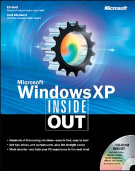Class Descriptions
CNIT 235: Windows Desktop Support Technician
Provides knowledge, skills, and practical methods to
troubleshoot basic problems end users face running Windows XP Operating
System and to configure and maintain common office applications in a
network environment.
Upon successful completion of this course, the student will be
able to:
A. Describe known problems associated with installations and upgrades of
the Operating System
B. Apply service packs, patches, and application updates
C. Perform client configuration and customization
D. Troubleshoot system startup and user logon problems
E. Interpret various error messages and suggest appropriate solutions to the
problems
F. Configure and troubleshoot hardware devices, such as displays, storage devices, and printers
G. Configure and troubleshoot security settings and security policies
H. Answer end-user questions related to application security
I. Demonstrate use of the Remote Desktop and Remote Assistance features
J. Set application compatibility settings
K. Analyze and resolve application installation problems
L. Manage email databases, including importing data, and fixing corrupted data
CNIT 105: Help Desk Operations
An overview of the concepts and procedures associated with operating a technical
support center or help desk call center, with particular emphasis on technologies
that can facilitate the work and generate statistics. Additionally, the course
will include extensive simulated and hands-on experience, role-playing, and
problem solving to practice good customer service and communications skills.
Upon successful completion of this course, the student will be
able to:
A. Define and describe essential components of a successful help desk center
B. Describe, develop, and practice good customer service and presentation skills
C. Explain and establish priorities and procedures for help desk operations
D. Plan roles and schedules for support teams; develop a plan for customer training
E. Demonstrate ability to use and configure various technologies: fax, voice mail, email, database, web page
F. Demonstrate ability to locate information, resources, updates, and support from various sources
G. Troubleshoot customer problems, including analysis of root causes and description of common problems
H. Evaluate and demonstrate computer software for help desk management
I. Develop and document standards to compare, evaluate, and select appropriate software and hardware
J. Monitor and analyze network performance track trends and identify bottlenecks
K. Monitor and analyze statistics; define trouble spots and areas for improvement
L. Make recommendations to modify current operations to improve customer service
|

